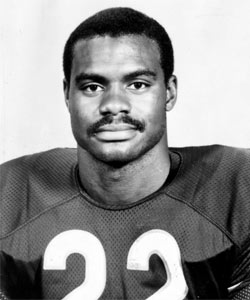 Now that the death of former Bears defensive back Dave Duerson has been ruled a suicide, I’m reminded of the 2006 suicide of Andre Waters: they were about the same age, were both great DBs during the same era, both played under Buddy Ryan, and head trauma is an issue in both their suicides.
Now that the death of former Bears defensive back Dave Duerson has been ruled a suicide, I’m reminded of the 2006 suicide of Andre Waters: they were about the same age, were both great DBs during the same era, both played under Buddy Ryan, and head trauma is an issue in both their suicides.
Granted, it’s likely that other issues will come into play in examining Duerson’s tragic decision. He had a number of reversals in his life during the past few years: he faced assault charges, followed by his resignation from the Notre Dame board of trustees and a divorce; his Highland Park house was foreclosed on [update: Here’s Dennis Rodkin’s 2008 Deal Estate post, with pics]; he filed for Chapter 7 bankruptcy, which was accompanied by a complaint from his ex-wife that he hadn’t fully disclosed all his assets, which included two Super Bowl rings, a Rolex Submariner, and his Walter Payton Man of the Year trophy; and he lost his business in a complicated turn of events detailed in this 2007 Tribune article.
But given the news that Duerson instructed his family that his brain should be studied for trauma, the parallels with Waters are inevitable. We know about the condition of Waters’s brain–"that of 80- to 90-year-olds suffering from dementia"–thanks to the work of Chris Nowinski, a Harvard-educated former pro wrestler whose early retirement after a series of concussions turned him into a brain-trauma crusader. Nowinski contacted Waters’s family so that it could be studied by Dr. Bennet Omalu, who has been studying the brains of deceased former football players since he autopsied Hall of Famer and former Steelers center Mike Webster as part of his job with the Allegheny County medical examiner in 2002. Duerson’s brain will be donated to Nowinski’s organization, the Center for the Study of Traumatic Encephalopathy at Boston University.
Mike Webster’s death was a significant turning point in the focus on football-related brain injuries. Webster died of heart failure, but in the years leading up to his death he suffered from depression, amnesia, and dementia, leading to business failures, divorce, and even homelessness, as detailed in a lengthy 2005 report by ESPN’s Greg Garber. Among the many sad details of Webster’s decline was his difficulty in obtaining disability benefits and treatment, as one problem led to another: Webster’s mental condition made it difficult for him to maintain a job, a business, and pay taxes, which ruined his financial situation, which made it harder for Webster to combat his numerous, severe mental and physical problems, which led to an arrest for forging prescriptions, and so on.
Webster’s death was also at the center of a conflict between Duerson and Mike Ditka; Duerson, who was a trustee of the NFL Players’ Union’s retirement board, accused Ditka of neglecting players’ safety as a coach and undermining the NFLPA, while Ditka used Webster as an example of the sport’s frayed safety net.
Since then, thanks in part to Nowinski’s organization, the science and coverage of football-related head trauma has become more intense and sophisticated. One of the more chilling developments in trauma research was research done at Purdue, where scientists monitored impacts to the heads of Lafayette, IN high-school football players. It suggests that seemingly incidental blows to the head can, over time, cause the long-term brain trauma in question instead of concussions from big hits:
"You can break something by hitting it hard once," says Katie Morigaki, a Purdue graduate assistant athletic trainer who worked on the study, "or you can break it by hitting it softer many times."
The research and subsequent coverage (including a lengthy 2010 series by the Sun-Times‘s Rick Telander) is fueling one of the big issues in the current talks between the league and the NFL players’ union: commissioner Roger Goodell’s plan to expand the regular NFL season to 18 games, up from its current 16. It’s not popular with players, sportswriters, and anecdotally it’s not popular among fans, either–which I can’t help but think is related to the media’s relatively new focus on the long-term aspects of football injuries, particularly the focus on brain injuries. As a lockout may be 10 days away, Duerson’s shadow will loom over the proceedings.


